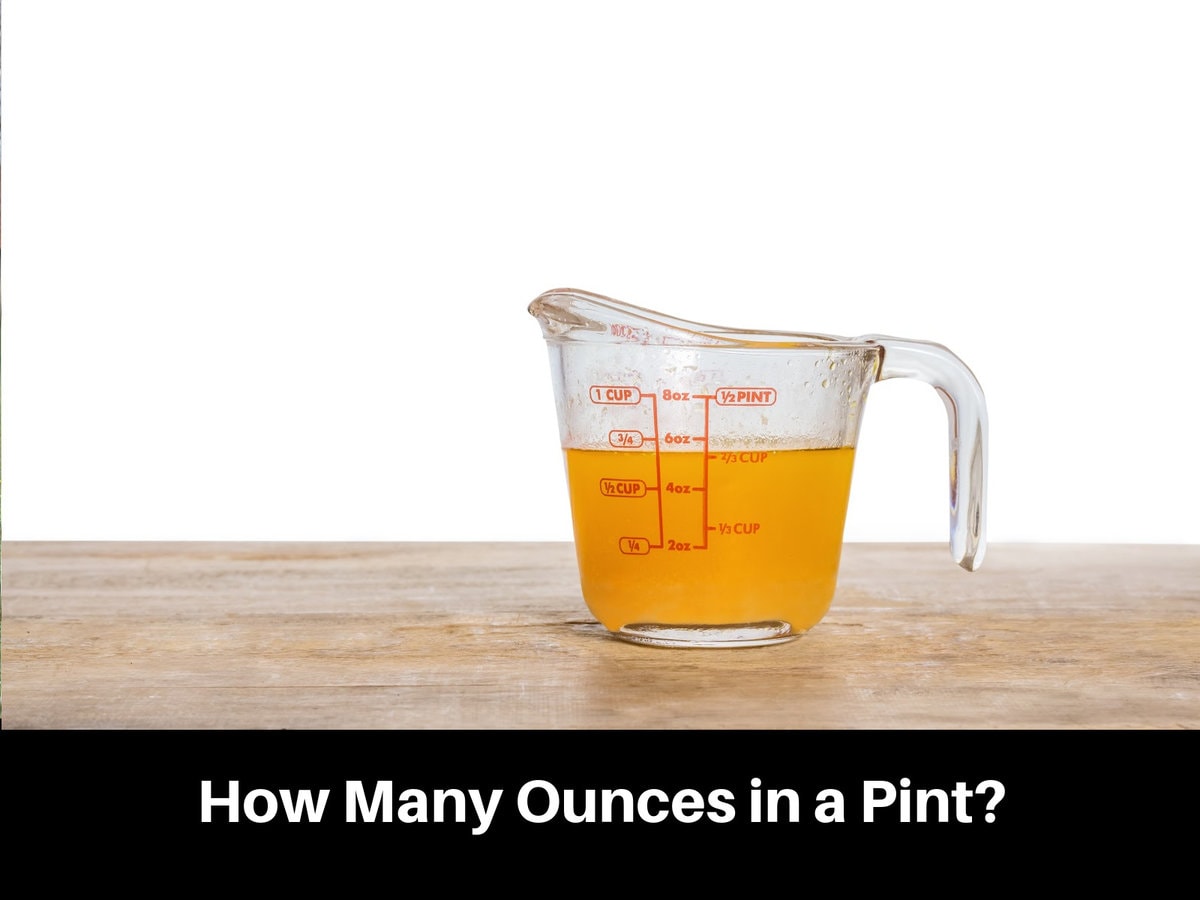Understanding measurement units is a crucial aspect of day-to-day life. Whether it’s cooking, baking, or crafting, knowing the correct measurement of a particular unit is essential. One such unit that often confuses people is the pint. Many people are unaware of how many ounces are in a pint and end up making mistakes while measuring ingredients for their recipes.
In this article, we will unveil the mystery behind how many ounces there are in a pint. We will explore different measurements and conversions to help you understand the concept with ease. By the end of this article, you’ll be able to measure with confidence and avoid any miscalculations in your recipes or projects. So let’s dive into this topic and learn something new today!
Understanding Volume Measurements: Exploring the Relationship between Ounces and Pints
The world of volume measurements can be a bit confusing at times, especially when it comes to understanding the relationship between ounces and pints. A pint is a unit of measurement that is commonly used in the United States and is equal to 16 fluid ounces. This means that if you have two cups of water (which are each 8 fluid ounces), you would need two cups to make up one pint.
On the other hand, if you’re trying to convert from pints to ounces, all you need to do is multiply the number of pints by 16. For example, if you have three pints of milk, that would be equivalent to 48 fluid ounces (3 x 16).
It’s important to note that there are different types of pints as well – for instance, in some countries like the United Kingdom, a pint is equal to 20 fluid ounces. It’s always best to double-check which type of measurement system you’re dealing with before making any conversions or calculations. By understanding these basic principles about volume measurements and how they relate specifically between ounces and pints, it becomes easier for anyone who needs measure liquids accurately in their daily life.
Defining a Pint: The Standard Measurement and Its Historical Origins
A pint is a unit of measurement that is commonly used to measure liquids such as beer, cider, or milk. In the United States, a pint is equivalent to 16 fluid ounces (473 milliliters), while in the United Kingdom, it’s equal to 20 fluid ounces (568 milliliters). The historical origins of the pint can be traced back to medieval times when ale and beer were served in pottery jugs known as “pints.”
Over time, pints became standardized measurements for buying and selling beer and other beverages. In 1824, the British Parliament passed an act that established imperial units of measurement based on prototypes kept at the Royal Mint. This act defined the imperial pint as 20 fluid ounces and it has been widely used throughout Britain ever since. However, many countries do not use this standard measurement. In Australia, for example, a pint equals 20 fluid ounces but in Canada, it’s only equivalent to 16 fluid ounces.
Despite these differences in measurements across different countries around the world today – what remains constant is that pints are universally understood as a reasonable size for drinking from and pouring out of glassware containers!
Demystifying Fluid Ounces: What They Represent in Liquid Measurements
Fluid ounces are a unit of measurement used to quantify the volume of liquid in a given container. They are commonly abbreviated as fl oz or simply oz, and they represent a fraction of a pint. One fluid ounce is equivalent to approximately 0.0625 pints, which means that there are 16 fluid ounces in one pint.
When measuring liquids using fluid ounces, it’s important to note that the weight of the substance being measured can vary depending on its density. For example, one fluid ounce of water weighs approximately 1.0432 ounces, while one fluid ounce of milk weighs approximately 1.0556 ounces.
It’s also worth noting that some countries use different units of measurement for liquid volume. In Canada and the United Kingdom, for instance, the imperial system is still used, meaning that pints and fluid ounces have slightly different values than their American counterparts. However, regardless of where you live or what system you use, understanding how many fluid ounces are in a given container is essential for accurately measuring liquids for cooking or other purposes.
Also Read: How Many Ounces in a Gallon
The US Customary Pint: Unveiling the Ounce-Pint Conversion Ratio
The US customary pint is a unit of volume measurement that is widely used in the United States. It is equivalent to 16 fluid ounces or 0.473 liters, and it is often used to measure liquid substances such as milk, beer, and water. However, many people are confused about the conversion ratio between ounces and pints.
To understand the ounce-pint conversion ratio, it’s important to know that one fluid ounce is equal to 0.0625 of a pint. This means that there are 8 fluid ounces in a cup, 16 fluid ounces in a pint, and 128 fluid ounces in a gallon.
It’s also worth noting that the US customary system of measurement differs from the imperial system used in many other countries. In the imperial system, one pint equals 20 fluid ounces rather than 16.
Overall, understanding the ounce-pint conversion ratio can be helpful when cooking or measuring liquids for other purposes. By keeping this information in mind, you can ensure accurate measurements and avoid confusion when working with different types of recipes or formulas.
The Imperial Pint: An Ounce-to-Pint Conversion Unique to the UK
The Imperial Pint is a unique unit of measurement commonly used in the United Kingdom. It is equivalent to 20 fluid ounces or approximately 568 milliliters. This measurement system was first introduced in the early 1820s, and it has been used ever since.
Despite its popularity in the UK, many people outside of this region are not familiar with the Imperial Pint. In fact, most countries use a different measurement system for their pints, making it difficult for international travelers to know exactly how much they are getting when ordering a pint at a bar or restaurant.
It’s worth noting that there are actually two different types of pints used in the UK: The Imperial Pint and the US Pint. The US Pint is slightly smaller than its British counterpart and measures only 16 fluid ounces. So next time you’re traveling to the UK or ordering a pint from an English pub, keep in mind that you may be receiving more than you bargained for!
Converting Pints to Ounces: Simple Formulas and Techniques
When it comes to converting pints to ounces, there are a few simple formulas and techniques that can help. First off, it’s important to understand the basic conversion factor: 1 pint is equal to 16 fluid ounces. So if you need to convert a certain number of pints into ounces, simply multiply that number by 16.
Another handy technique for converting pints to ounces is using online conversion tools or smartphone apps. These programs make it easy to quickly convert any measurement you need with just a few taps or clicks.
Finally, it’s worth noting that while most people think of fluid ounces when they hear “ounces,” there are actually different types of ounces out there. For example, there are also dry ounces used for measuring ingredients like flour and sugar in baking recipes. Be sure you know what type of ounce you’re dealing with before making any conversions!
Also Read: Road Safety Navigation App Launched by Ministry of Transport
Real-Life Applications: Why Knowing the Ounce-Pint Conversion Matters
Knowing the ounce-pint conversion is essential in various real-life situations. For instance, if you are a bartender or a mixologist, it is imperative to know how many ounces are in a pint to make precise cocktail measurements. In cooking and baking, understanding this conversion helps you measure ingredients correctly and ensure that your recipe turns out as expected.
Moreover, for those who love gardening or taking care of plants at home, knowing the ounce-pint conversion can be beneficial when watering them. By converting ounces to pints, you can determine how much water your plants need and avoid overwatering or underwatering them.
In conclusion, understanding the ounce-pint conversion is crucial in many aspects of life. From bartending and cooking to gardening and plant care, having this knowledge can help you make accurate measurements and ensure success in your endeavors.
Practical Examples: How Many Ounces in Popular Beverages?
Beverages come in various sizes and measurements. It is essential to know the ounces of your favorite drink, especially when ordering at a bar or restaurant. For example, a regular can of soda typically contains 12 ounces, while a tall Starbucks coffee cup has 16 ounces. A standard bottle of beer generally contains 12 ounces or an equivalent fraction.
Other popular beverages include wine and spirits. A glass of wine usually has five ounces, while a shot of liquor is equal to 1.5 fluid ounces. Additionally, energy drinks such as Red Bull or Monster usually have eight fluid ounces in one can.
Knowing the number of ounces in popular beverages can help you make informed decisions about your daily intake and ensure that you receive accurate serving sizes when ordering drinks outside the home.
Common Pitfalls: Misunderstandings and Errors in Ounce-Pint Conversion
One of the most common pitfalls when it comes to ounce-pint conversion is misunderstanding the difference between liquid and dry measurements. While there are 16 fluid ounces in a pint, there are only 14.4 ounces in a dry pint. This means that if you’re converting a recipe that calls for dry ingredients, you’ll need to adjust your measurements accordingly.
Another common error is assuming that one pint is equal to two cups. While this may be true for some liquid measurements, it’s not always the case with pints, as they can vary depending on whether they’re measuring liquids or solids. For example, one liquid pint equals two cups, while one solid pint equals 1 1/2 cups.
To avoid these misunderstandings and errors, it’s important to carefully read recipes and double-check conversions before beginning any cooking or baking project. It may also be helpful to invest in reliable measuring tools and reference charts to ensure accuracy in all your culinary endeavors.
Expert Tips: Quick Ways to Estimate Ounce-to-Pint Conversion in Everyday Life
- Memorize the Standard Conversion: One pint equals 16 fluid ounces, so if you need to convert a pint to ounces quickly, just remember this standard conversion. Similarly, if you have an ounce measurement and need to know how many pints it is equal to, divide the number by 16.
- Use Common Household Items for Reference: If you don’t have access to measuring cups or scales but need to estimate conversions in your everyday life, use common household items as reference points. For example, a standard water bottle typically holds around 16 ounces (or one pint), while a can of soda is usually about 12 ounces (3/4 of a pint).
- Pay Attention to Packaging Labels: Many food and drink products come with packaging labels that indicate their volume in both ounces and pints. Take note of these measurements when shopping or using these products at home – they can serve as helpful references when estimating conversions on the fly.





